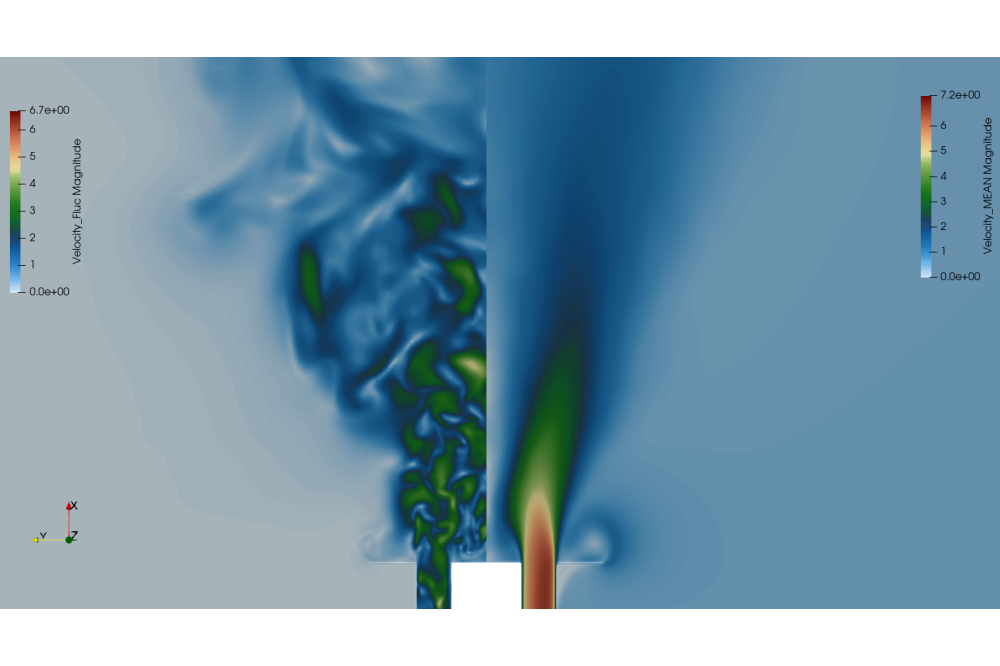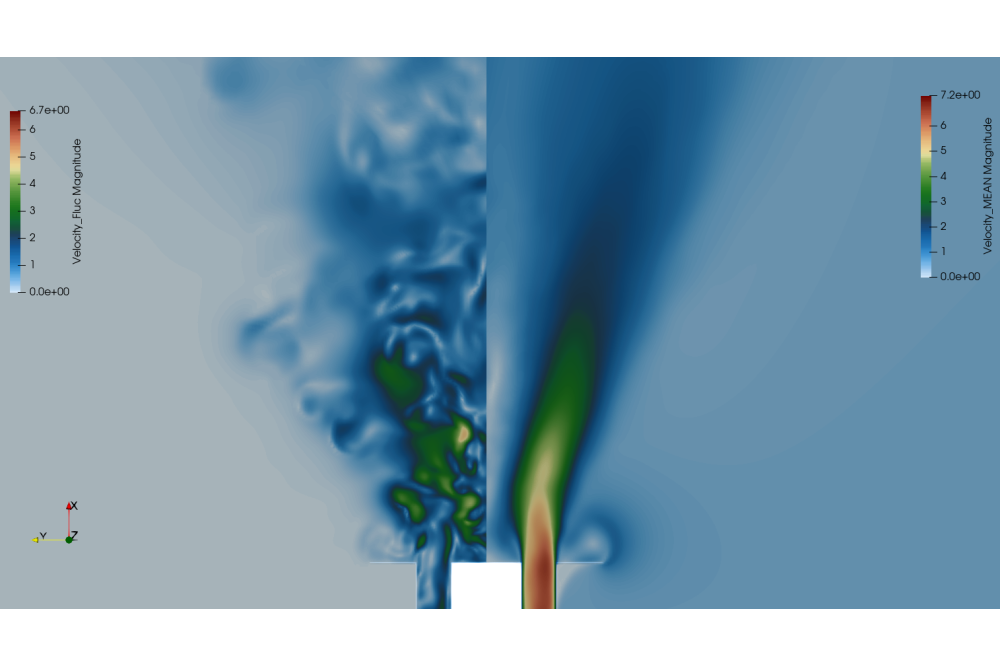Investigation of Turbulent Inlet Boundary Conditions of Swirled Flows in Gas Turbine Combustors
Einleitung
The general purpose of this project was to investigate the capabilities of the Proper Orthogonal Decomposition Fourier Series (PODFS)-Method [2] to see whether it was possible to extract turbulence from an existing high-fidelity simulation and use the generated data to create turbulent inlet conditions in the context of CFD-simulations. Due to the complexity of such simulations - both in time and computational effort -, the usage of the Lichtenberg Cluster was considered inevitable for the success of this project.
Methoden
The project consisted of two main parts. The first part was a channel flow case, which was mainly for getting to know the PODFS and to extract some data for comparison against experimental results. The second part was a high-fidelity simulation of a TECFLAM-Burner [1] in order to investigate the PODFS method in swirled flows with much higher complexity. The comparison in both cases focused on the reproducibility of the original simulation using the PODFS-method regarding the instantaneous velocity field and statistical phenomena, such as the velocity rms-values and mean flow. In addition to quantitative measurements, the velocity field was analyzed qualitatively by comparing the mean and instantaneous velocities in order to visually search for similarities and differences throughout the entire flow domain.
Ergebnisse
The PODFS showed to be a very accurate method for reproducing the original simulations from both a qualitative and quantitative point of view, with some minor inaccuracies in low-energy regions of the flow. It was found that the PODFS, if used in a non-optimal way, can act as an energy-filter, disregarding low-energy flow phenomena. As can be seen in figures 1 and 2, the PODFS is able to extract the high-energy structures with big vortices from the original simulation. Additionally, it can be noted that low-energy structures are missing some detail or do not show in the results at all. This can be explained due to the aforementioned energy-filter-problem. Furthermore, great care should be taken when selecting the data to extract the PODFS from. It should reflect not only a long enough, but also a relevant timespan within the original simulation in order to make sure, that all relevant phenomena are included in the baseline dataset.
Diskussion
The PODFS promises to greatly reduce the effort that is necessary for simulating turbulence with a sufficient amount of detail. It is capable of reducing both the time spent on simulations and the computational resources needed, due to it requiring a less detailed mesh and the possibility of disregarding certain parts of the geometry which would otherwise be needed for a traditional simulation. Another benefit of the PODFS-method is the possibility of recycling existing flow-information for future research and design problems, as long as the scenarios use the same geometry at the inlet of the computational domain.





